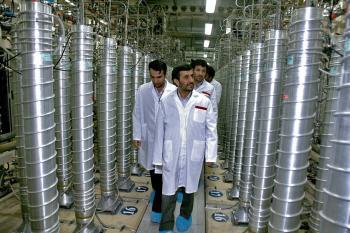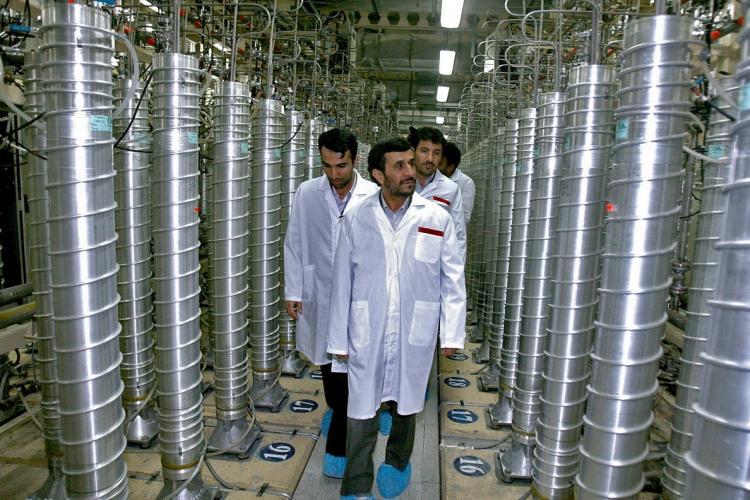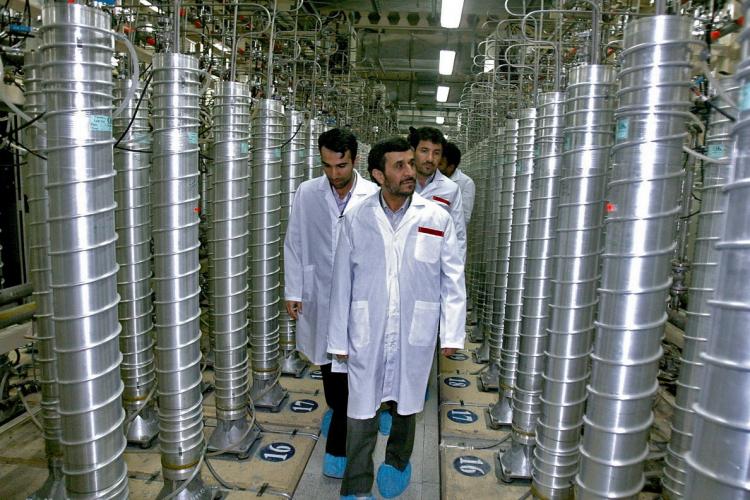Findings confirm that the Stuxnet virus aimed to physically destroy nuclear centrifuges that enrich uranium at Iran’s Natanz facility, rather than lowering their production of low enriched uranium (LEU).
Although Stuxnet destroyed 1,000 of the 9,000 centrifuges at Natanz, its damage on the nuclear plant is unlikely to continue, according to a report from the Institute for Science and International Security (ISIS).
“Iran likely cleaned the malware from its control systems,” states the report. “To prevent re-infection, Iran will have to exercise special caution since so many computers in Iran contain Stuxnet.”
The Stuxnet virus was found in computers at Iran’s Bushehr nuclear facility, yet its main target is believed to be the Natanz facility, where it successfully destroyed centrifuges.
“It rattled the Iranians, who were unlikely to know what caused the breakage, delayed the expected expansion of the plant, and further consumed a limited supply of centrifuges to replace those destroyed,” states the ISIS report.
After it destroyed 1,000 centrifuges at Natanz, the Stuxnet creators—who remain unknown—made improvements to its code that “undoubtedly sought to enable the program to again breach Iran’s security on its gas centrifuge program and destroy more centrifuges,” states the report, citing security company Symantec.
“Nonetheless, Iran took steps in the aftermath of the attack that likely reduced further damage by Stuxnet, principally shutting down many centrifuge cascades for months,” the report states. It was during this downtime that the virus could have been discovered.
According to a report from anti-virus company Symantec, “Stuxnet is an incredibly large and complex threat.”
The virus included exploits that were previously unknown and was able to control and destroy physical, moving parts of industrial systems. It is also strikingly clean: Stuxnet does not have a “digital fingerprint” that can be traced back to their creators, as viruses normally do.
Although Stuxnet destroyed 1,000 of the 9,000 centrifuges at Natanz, its damage on the nuclear plant is unlikely to continue, according to a report from the Institute for Science and International Security (ISIS).
“Iran likely cleaned the malware from its control systems,” states the report. “To prevent re-infection, Iran will have to exercise special caution since so many computers in Iran contain Stuxnet.”
The Stuxnet virus was found in computers at Iran’s Bushehr nuclear facility, yet its main target is believed to be the Natanz facility, where it successfully destroyed centrifuges.
“It rattled the Iranians, who were unlikely to know what caused the breakage, delayed the expected expansion of the plant, and further consumed a limited supply of centrifuges to replace those destroyed,” states the ISIS report.
After it destroyed 1,000 centrifuges at Natanz, the Stuxnet creators—who remain unknown—made improvements to its code that “undoubtedly sought to enable the program to again breach Iran’s security on its gas centrifuge program and destroy more centrifuges,” states the report, citing security company Symantec.
“Nonetheless, Iran took steps in the aftermath of the attack that likely reduced further damage by Stuxnet, principally shutting down many centrifuge cascades for months,” the report states. It was during this downtime that the virus could have been discovered.
According to a report from anti-virus company Symantec, “Stuxnet is an incredibly large and complex threat.”
The virus included exploits that were previously unknown and was able to control and destroy physical, moving parts of industrial systems. It is also strikingly clean: Stuxnet does not have a “digital fingerprint” that can be traced back to their creators, as viruses normally do.




![[LIVE NOW] Media Raise Questions About Controversial Cloud Seeding After Middle East Floods](/_next/image?url=https%3A%2F%2Fimg.theepochtimes.com%2Fassets%2Fuploads%2F2024%2F04%2F23%2Fid5635847-CR-TN_REC_0424-1080x720.jpg&w=1200&q=75)


![[LIVE 4/26 at 10:30AM ET] New Push Started for Global Digital Currencies](/_next/image?url=https%3A%2F%2Fimg.theepochtimes.com%2Fassets%2Fuploads%2F2024%2F04%2F19%2Fid5633115-0426-1080x720.jpg&w=1200&q=75)
Friends Read Free